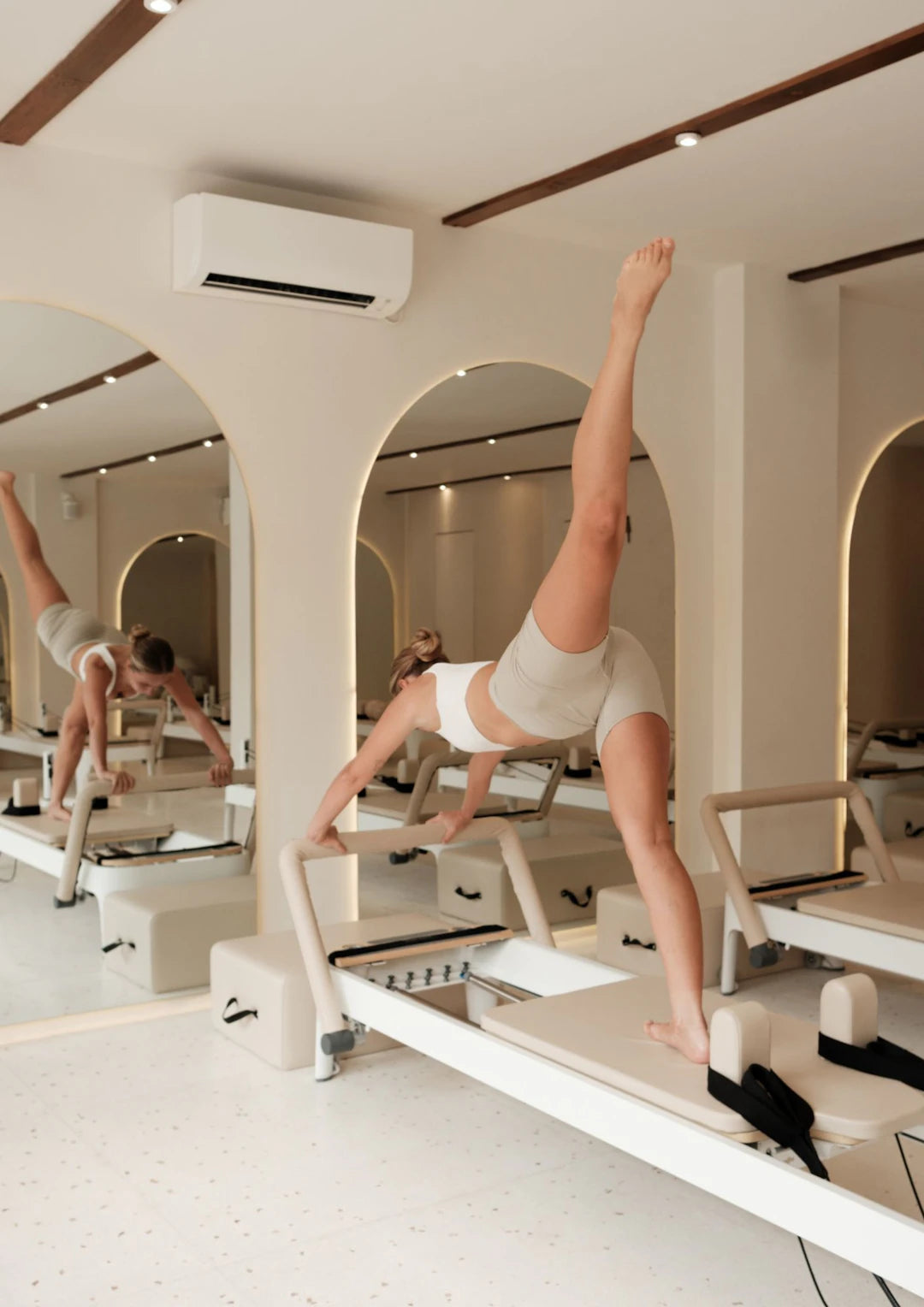Call to Order: +1 (888) 609-7703 Mon-Fri 9-5 CST
+1 (888) 609-7703
Mon-Fri 9am-5pm CST
🚚 Free Shipping Storewide – Limited Time Only! - Sale Ends: 11:59PM CST
🚚 Free Shipping Storewide - Ends: 11:59PM CST

Discover the benefits of Pilates reformer workouts, including core strength, flexibility, and improved posture. This guide covers the history, how to get started, key exercises, and common mistakes to avoid, ensuring a safe and effective practice for all levels.
If you’re looking to enhance your fitness routine, a Pilates reformer can be a transformative addition to your practice. This innovative apparatus enables a wide range of exercises that promote strength, flexibility, and overall body awareness. In this comprehensive guide, we explore everything you need to know about Pilates reformer workouts and how they can benefit you.
The Pilates reformer is an exercise machine designed to support and challenge your body during your workouts. The reformer consists of a carriage that moves along a frame, and it is equipped with adjustable springs that provide resistance. This dynamic design allows for a variety of exercises targeted at different muscle groups.
Pilates was developed by Joseph Pilates in the early 20th century. He created this system of exercises to improve physical fitness and rehabilitation. The reformer was born as a tool to help individuals perform exercises with greater precision and control. Today, it remains a staple in Pilates studios worldwide, providing users with a unique workout experience.
Incorporating Pilates and reformer exercises into your routine offers numerous benefits. Here are some key advantages:
Getting started with Pilates reformer workouts can be an exciting journey. Here’s a step-by-step guide to help you dive in:
Choosing the right instructor is crucial to ensure a safe and effective Pilates practice. Look for certified Pilates instructors who have experience with reformer training. They will guide you through the fundamentals and help you develop proper technique.
Before jumping into advanced exercises, it’s important to master the basic moves on the reformer. Begin with foundational exercises that focus on form, control, and breathing. This will set a solid foundation for more challenging movements.
Consistency is key when it comes to reaping the benefits of Pilates and reformer workouts. Aim to practice at least twice a week to build strength, enhance flexibility, and improve overall fitness. As you progress, you can vary your routine and incorporate more advanced exercises.
Here are some fundamental reformer exercises that you can implement into your workouts:
As you embark on your Pilates reformer journey, being mindful of common mistakes can help you achieve the best results:
To maximize the benefits from your Pilates and reformer workouts, consider creating a well-rounded routine that incorporates various elements:
Start your session with dynamic stretches and light movements to warm up your body. This prepares you for the more challenging exercises ahead.
Include a mix of strength-building movements and flexibility-enhancing exercises. Aim for a balanced routine that targets all major muscle groups while ensuring core engagement.
End each workout with static stretches focusing on the muscles you’ve engaged during your session. This helps reduce soreness and improves flexibility over time.
Absolutely! The reformer is suitable for all fitness levels, including beginners. Starting with basic exercises under the guidance of a qualified instructor will help you build confidence.
For optimal results, aim to practice Pilates and reformer workouts at least twice a week. As you progress, you can increase the frequency based on your personal goals and fitness level.
Most studios provide reformers for use during classes. If you’re working out at home, consider investing in a reformer for convenience and the ability to practice anytime.
Embarking on a Pilates reformer journey can elevate your fitness, enhance your body awareness, and align your mental and physical well-being. As you explore the diverse range of exercises and commit to a consistent practice, you’ll soon experience the transformative power of Pilates and reformer training. So, roll out your mat, hop onto your reformer, and let your fitness journey flourish! Remember, the key to success lies in your commitment and the joy of movement.
Your Price:
Elina Pilates Classic Aluminium Reformer 86" with Tower Introducing our 86” Aluminum Classic Reformer with Tower, a masterpiece designed to elevate...
View full detailsYour Price:
Elina Pilates Elite Wood Reformer Machine with Tower Experience studio-quality performance with the Elina Pilates Elite Wood Reformer Machine with ...
View full detailsYour Price:
Elina Pilates Mentor Reformer With Tower With cutting-edge features, this professional reformer adapts to all levels. Its sturdy aluminum structure...
View full detailsYour Price:
Elina Pilates Master Instructor Reformer The Master Instructor Reformer is an exceptional choice of professional Pilates machine, available in four...
View full detailsYour Price:
Elina Pilates Cadillac Reformer Machine Experience the perfect blend of elegance, durability, and performance with the Elina Pilates Cadillac Refo...
View full details{"one"=>"Select 2 or 3 items to compare", "other"=>"{{ count }} of 3 items selected"}